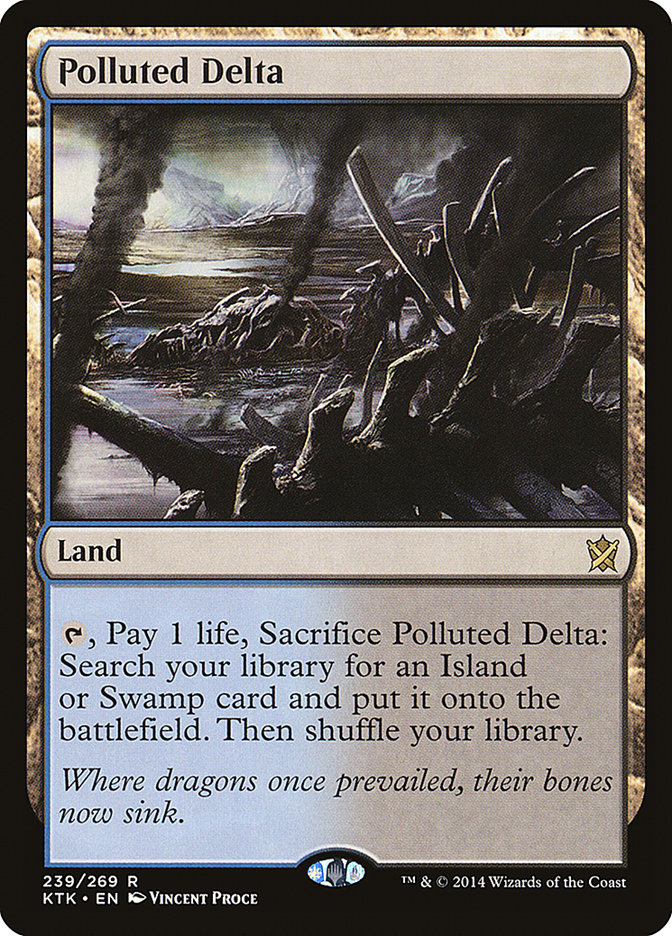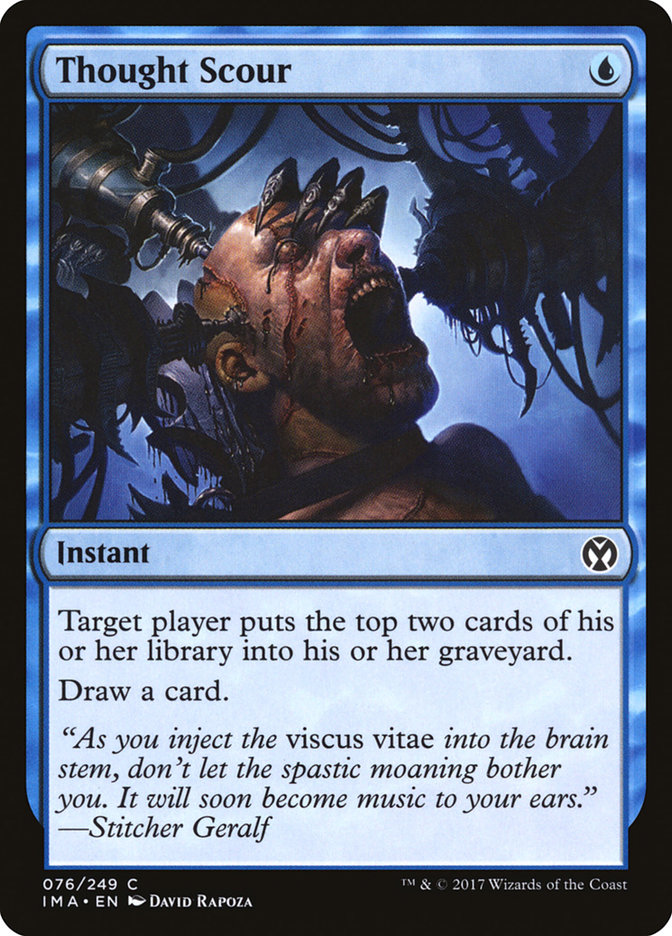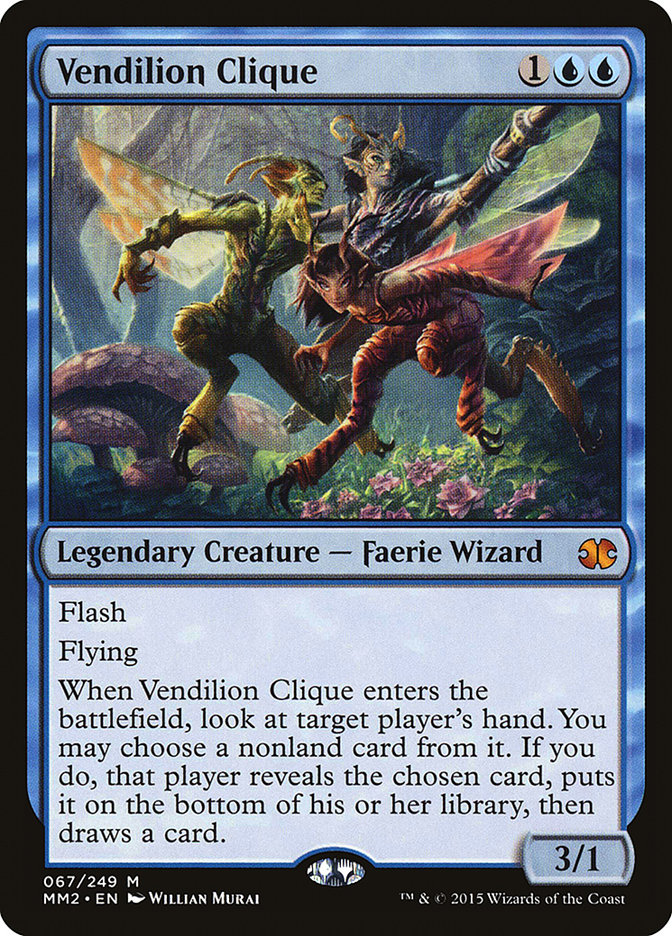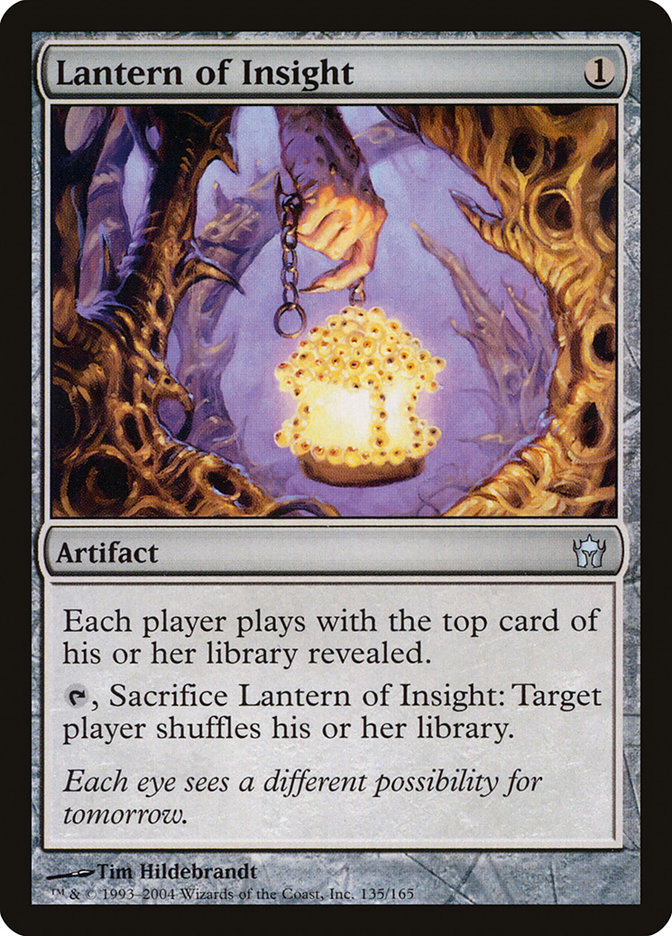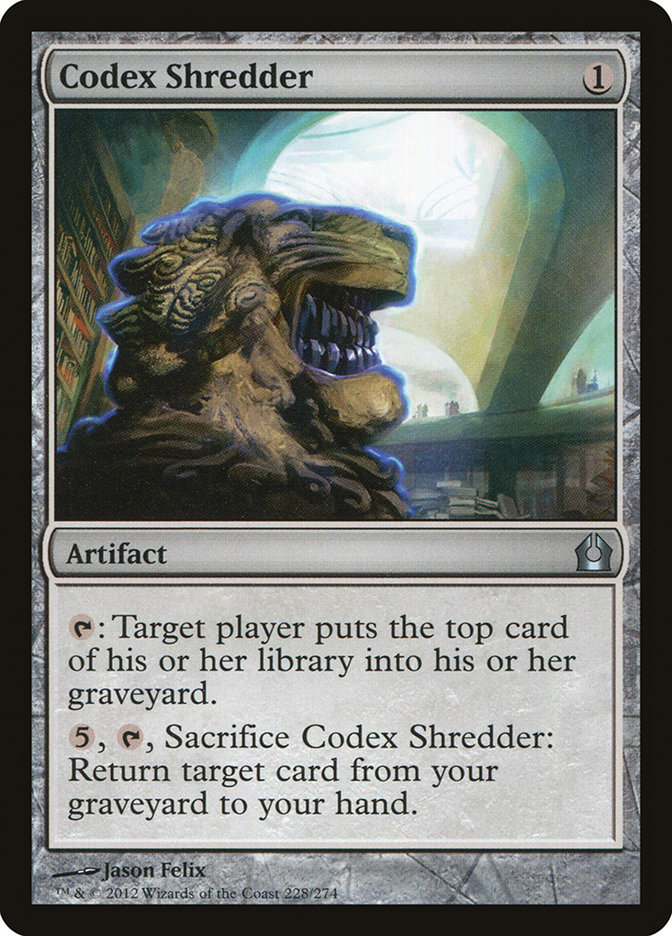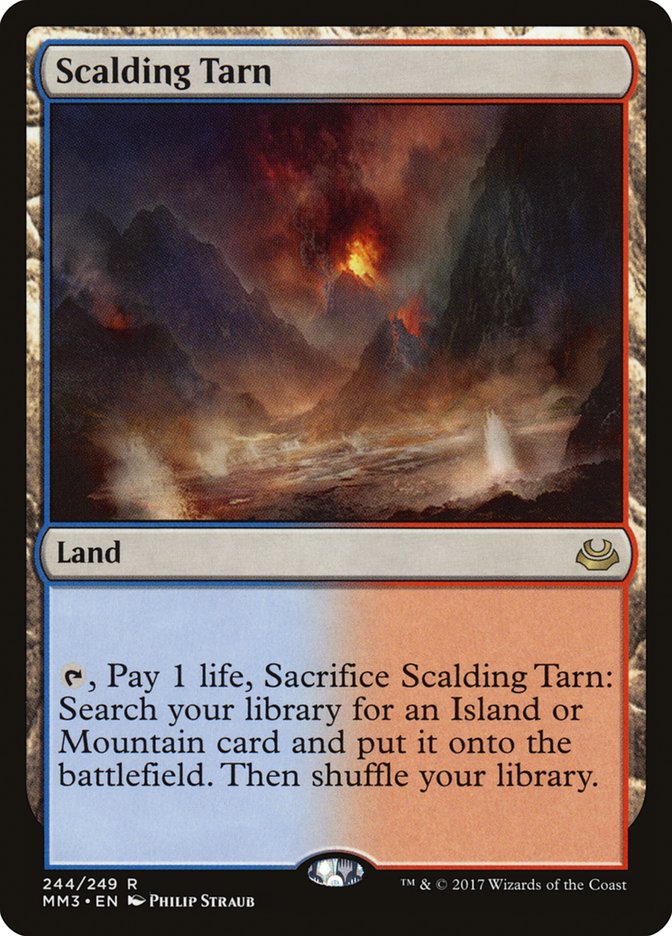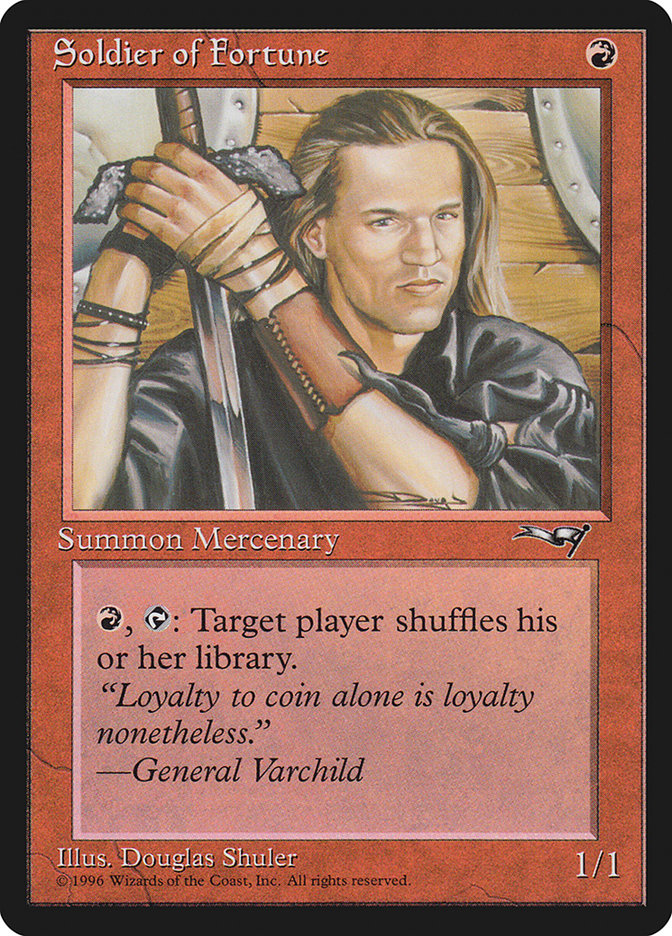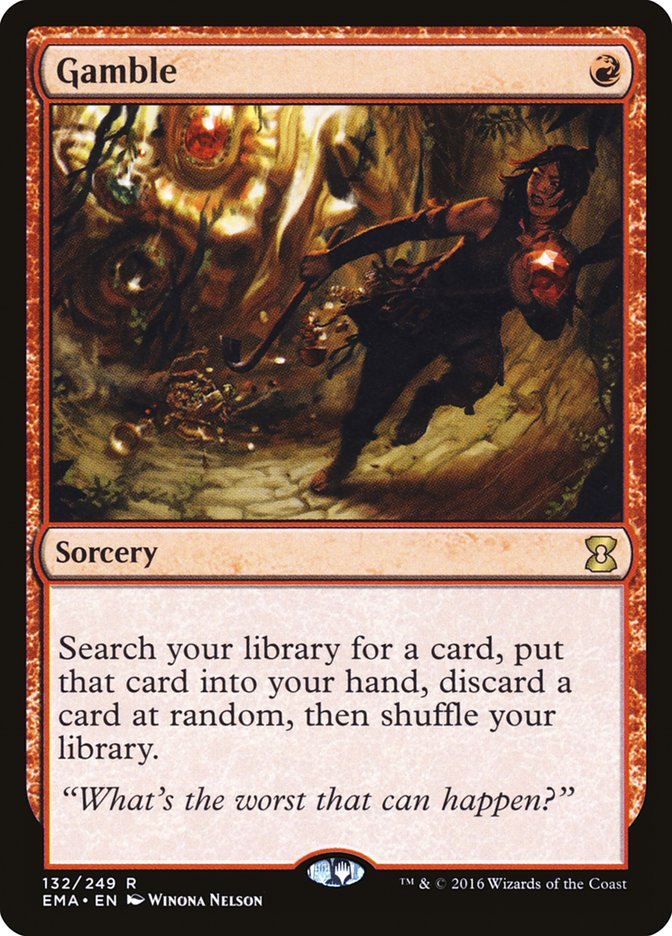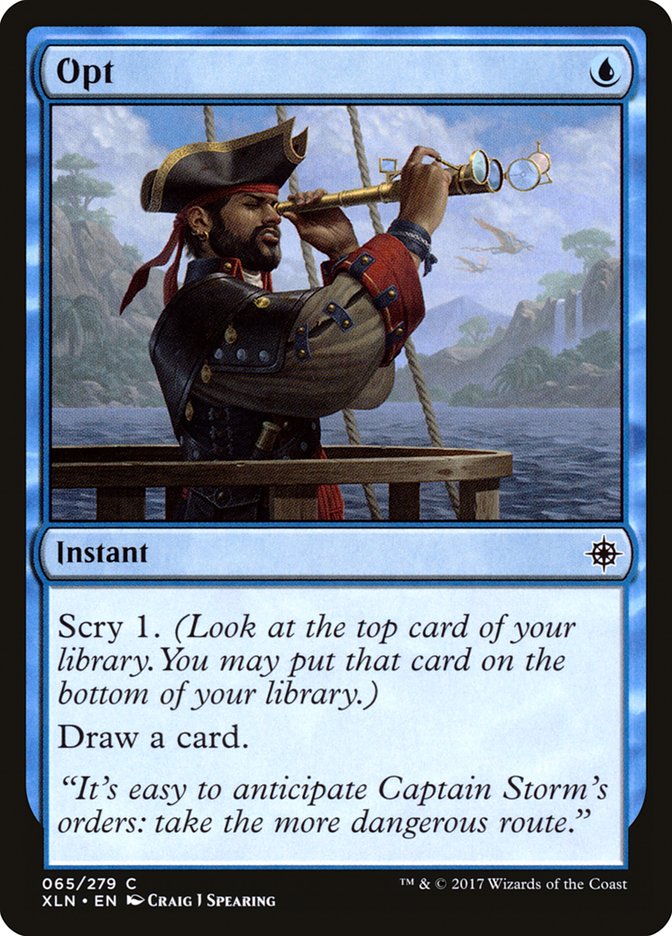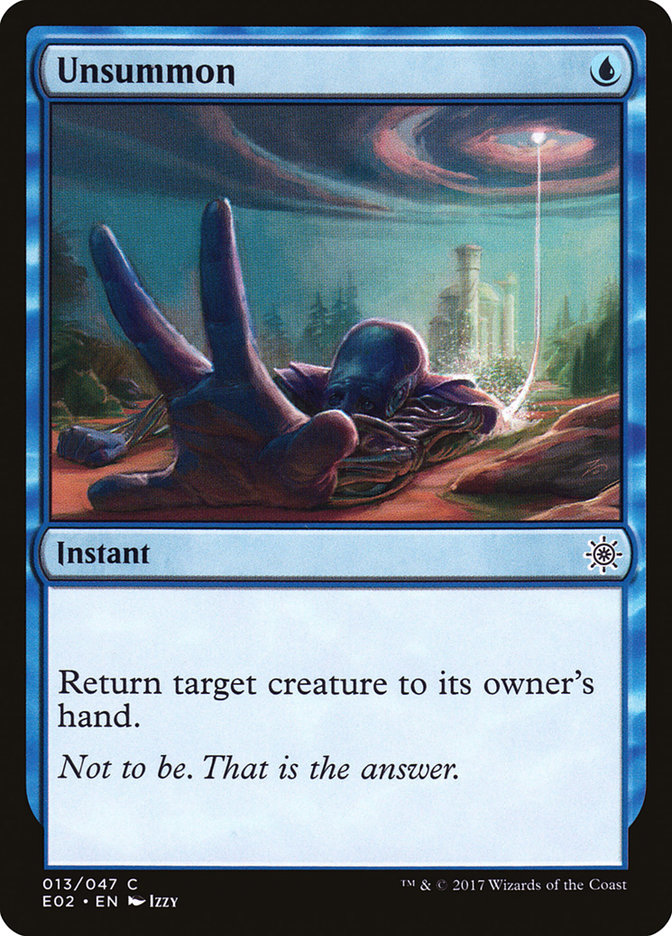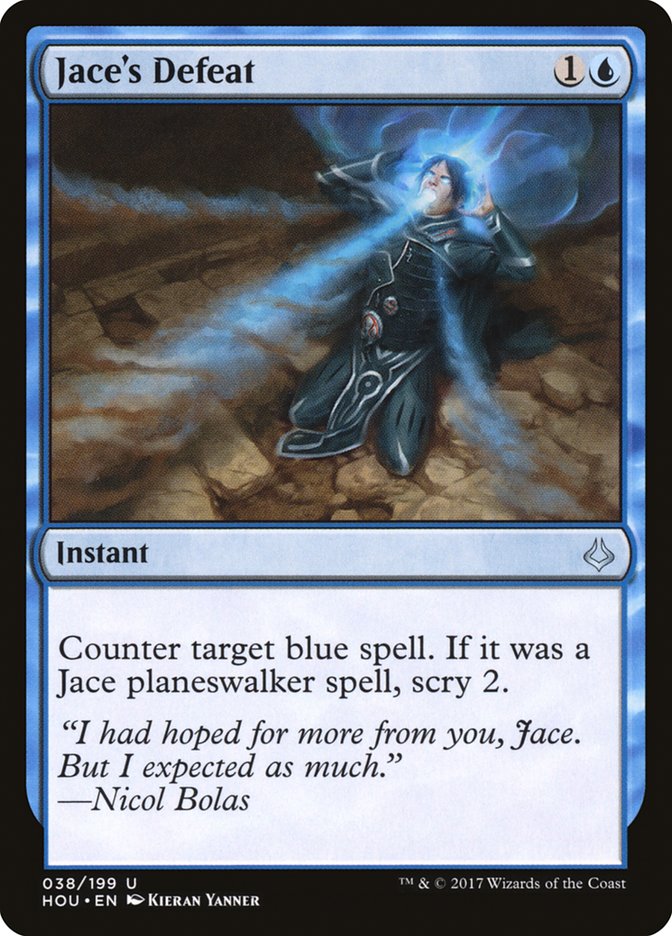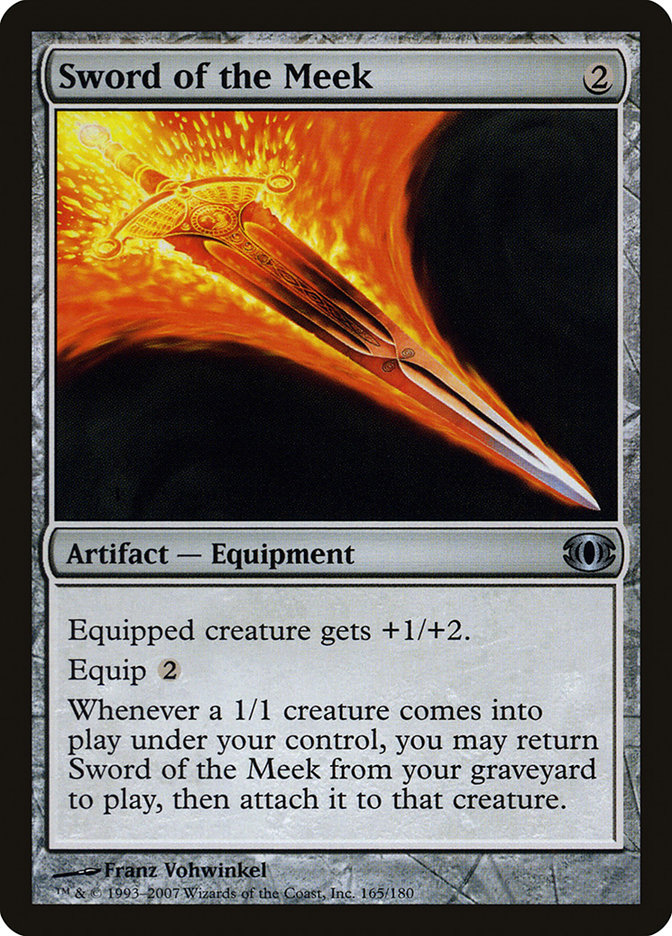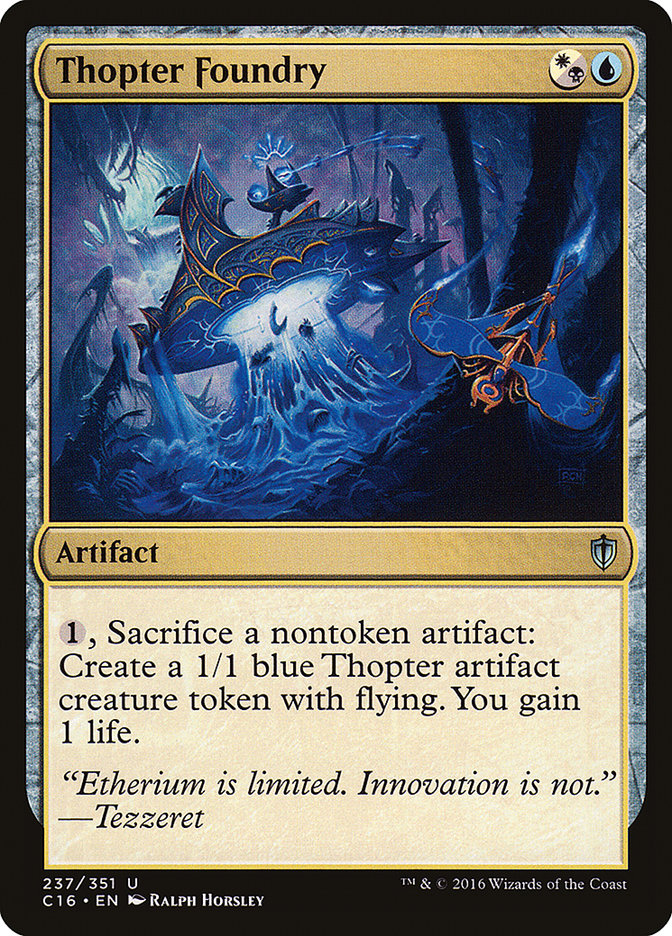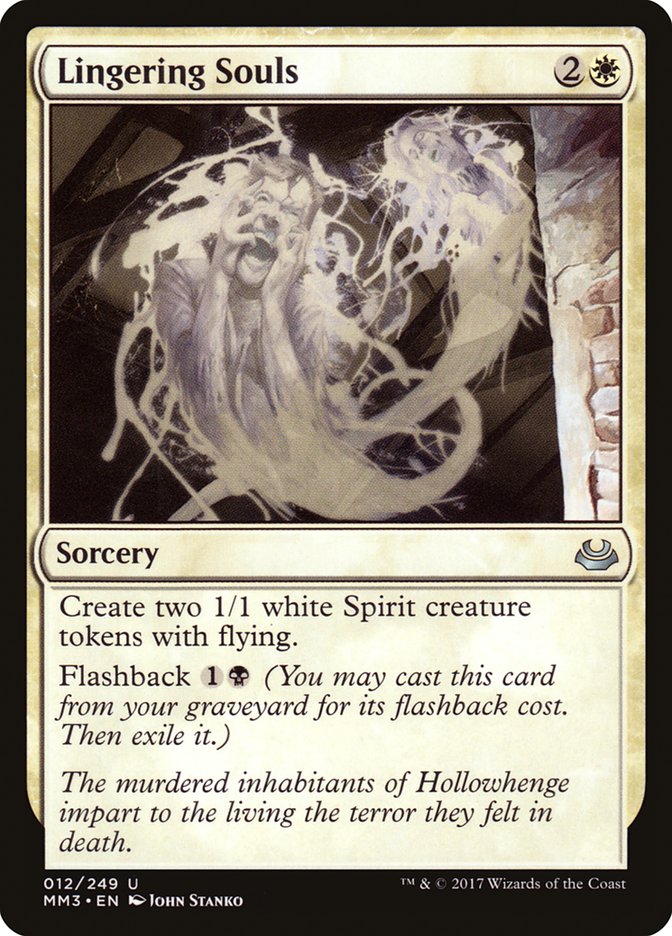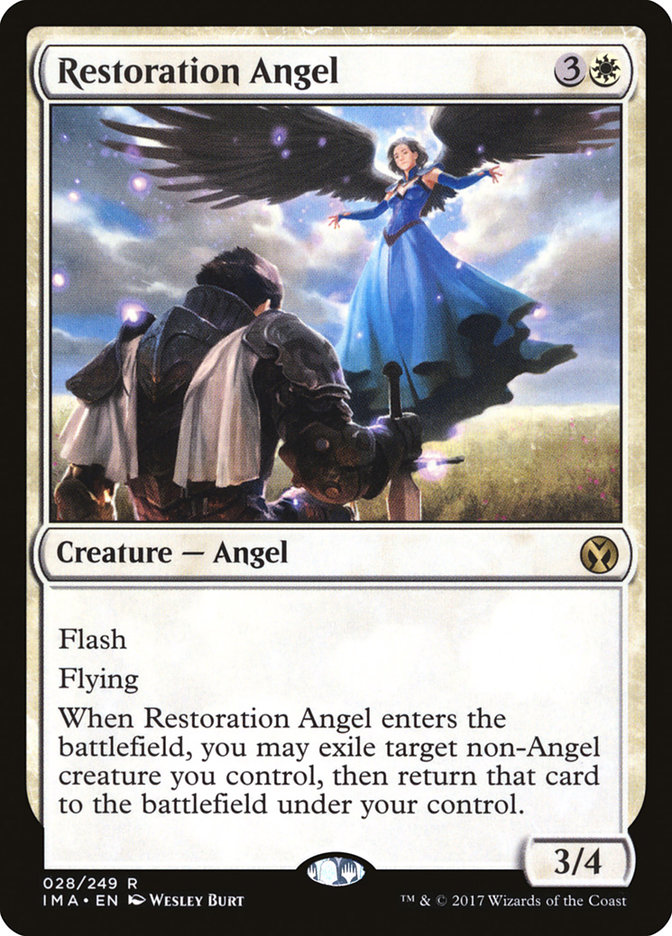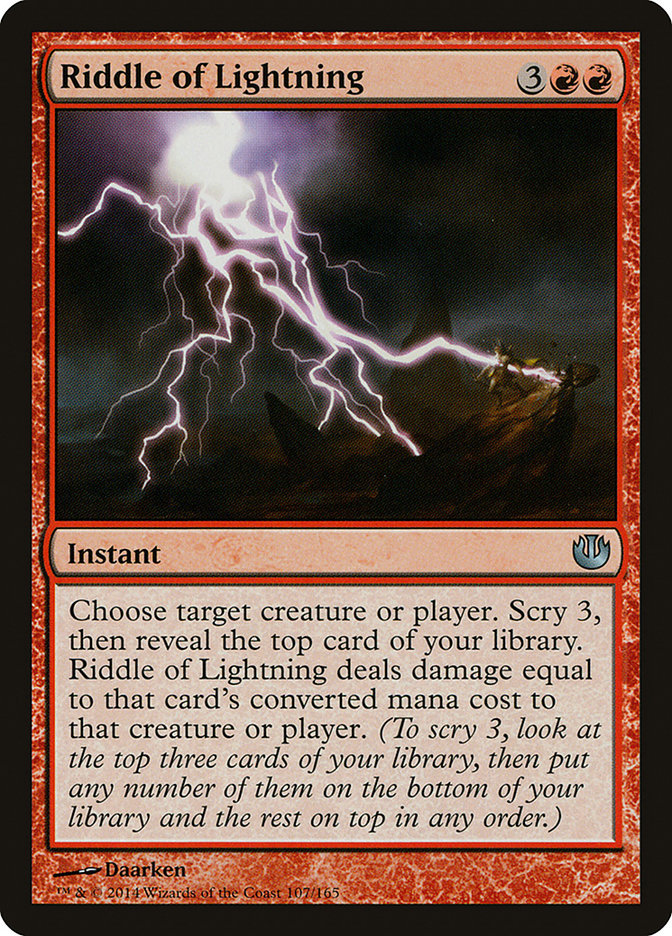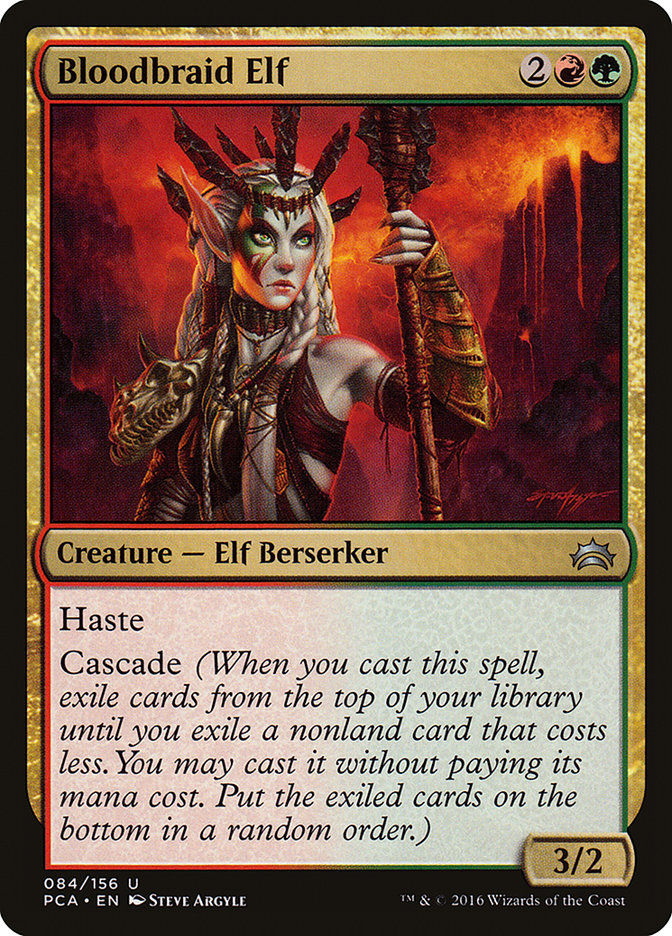Jace, the Mind Sculptor
better than all…
Sick of hearing about Jace yet?
Just think about how
music to the ears
all this Jace talk will be a year from now…
Jace, the Mind Sculptor is incredibly powerful.
Like, we’re talking a lot more than that.
We’re talking about really, really good.
There’s this idea that gets thrown around sometimes, that Jace is somehow
bad against combo decks, ostensibly because your first play of the game is
tapping out for a turn 4 Jace, only to be dispatched by a turn 4 combo kill
of some variety.
In reality, Jace is extremely good at converting reactive cards that don’t
line up right into cards of substantially greater value. Got a hand full of
extra removal spells against one of these combo decks? Jace’s zero (which,
for those not familiar, is the ability you should use when you don’t know
which ability you should use), and suddenly you’re looking at a hand full
of high octane gasoline. Crack a fetchland or Thought Scour yourself, and
you’re really rolling.
If you’re playing against a control deck or a midrange deck, if you stick a
Jace, you’ll quickly run away with the game. Right there. Whatever you
need, Jace’ll help.
Not sure what you need?
As a guy that’s activated Jace, the Mind Sculptor more than most, one of
the biggest mistakes I see people make is not 0’ing enough. Don’t get me
wrong: you wanna play around stuff like Vendilion Clique and Lightning
Bolt.
I’m just saying, there are a lot of times people play too defensively and
+2 Jace in order for Jace to not die… only to have Jace end up dying that
turn anyway. Frequently, the best way to “defend” Jace is to 0 and believe
in the heart of the cards. Maybe you’ll find a Bolt or a Fatal Push, maybe
you won’t and Jace just dies. At least you’ll have resolved a Brainstorm.
What else do you want out of your day?
Okay,
okay.
so Brainstorm is good. Are we never going to build up to his
ultimate?
Of course we’re going to build up to his ultimate; we just need to be smart
about it. When you’re losing, it’s important to Brainstorm a lot, as it’s
frequently the best way to get out of it. When you’ve got the game sewn up,
you can just keep +2’ing Jace to fateseal your opponent, ensuring you
always know what they’re going to draw and ensuring they’re never going to
draw anything to get out of this.
What about the games in between those two poles?
Well, when things are close, when there’s a lot of pressure on you, when
you might need the extra loyalty just to keep Jace around, but at the same
time want the Brainstorms because you’re not currently a raving lunatic, a
back-and-forth approach really is great.
For instance, drop Jace and +2 if you’re really so sure your opponent may
have a Bolt or some such. However, next turn is frequently a great turn to
0, even if you don’t need anything. If you’ve got anything worth
getting rid of, putting it back and shuffling it away is obviously Plan A.
However, if you don’t have a way to shuffle your deck, Jace does a pretty
passable job of that in his own right.
Each time you 0, you can put two cards back (including possibly something
you want to keep hidden out of your hand, defending yourself against
Thoughtseize). On your next turn, you draw that top card and generally have
your worst card now on top of your deck. On this turn, you can +2 yourself,
put that card on the bottom of your deck, and keep speeding through your
deck. This lets you see just as many new cards next turn as you would have
if you had Brainstormed again (assuming no shuffles), but you’re up +2
loyalty. Of course, you do have one less card in hand, putting it on the
bottom of your deck, instead.
It’s not where you want to be, but sometimes you’re going to be facing down
an opponent Jace-ing you with his +2 ability, managing your draw step. As
anyone that’s ever had to face a Lantern of Insight/Codex Shredder lock can
tell you, it’s not where you want to be.
Planeswalkers (1)
Lands (18)
Spells (41)

There’s a big difference, however. While Lantern of Insight and Codex
Shredder can regulate the top of your deck quite a bit, Jace only gets one
shot per turn, and it’s always during the main phase. This leaves a lot
more room for counterplay.
Each fetchland you leave lying around is another potential shuffle effect,
another shot at a random card, instead of the card your opponent wants you
to draw.
Of course, this leads to a “meta” game of Jace bluffing. If you’re Jace-ing
someone with his +2 ability, and they happen to have a fetchland, you
generally want to get them to use it up. As long as they have it uncracked,
they have the option to shuffle at will, giving them a chance at a real
draw. This can lead to game states where you look at your opponent’s top
card and let them keep it, when you really want them to shuffle. It’s just
that when you let them keep it, you’re suggesting that it’s really bad,
which implies that they should shuffle their deck.
This isn’t to suggest that you should look at your opponent’s Maelstrom
Pulse on top of their deck and let them keep it in order to try to bluff
them out of their fetchland. Rather, you want to have an idea of how much
the shuffle is worth to them and how much it would hurt you if they called
your bluff.
Remember, it’s not just about getting them to crack their fetchlands early,
though. You also want to “be a person that is capable of leaving something
good on top.” Once you’ve got your opponent guessing that they should do
the opposite of what they think they should do, you’ve already won. If they
start trying to defend themselves against you possibly bluffing, they might
do stuff like draw a card you let them have without cracking their
fetchland. Maybe it doesn’t hurt them that bad, but sometimes being a turn
behind on drawing a random card can make all the difference.
Brainstorming is most commonly abused by combining with a shuffle from
stuff like Misty Rainforest, but it’s also excellent to follow up with
self-mill cards. We mentioned Thought Scour above, but one of the most
powerful new cards in this vein is Search for Azcanta.
If you Jace and put something back you don’t want, you can use the Search
on your upkeep to mill the top card. Then, when you’ve transformed Search
for Azcanta, you can repeatedly reset the top of your library with its
activated ability. As if that wasn’t enough synergy, Jace, the Mind
Sculptor is the perfect “non-creature, non-land card” to dig to with Search
for Azcanta to really put a game away.
For instance, here’s a Grixis Control deck in the style of Corey Burkhart:
Creatures (4)
Planeswalkers (3)
Lands (25)
Spells (28)

I’m not sure on the mix of cantrips, but whether it’s Opt or Thought Scour,
the instant speed is much appreciated in this style (as opposed to Serum
Visions).
While Thought Scour can clear away two unwanted cards, Opt clearing away
one is solid, too. Opt is also better for digging when you don’t have a
Jace, and times like those are especially important.
As a side note, one of the best times to Thought Scour your opponent is in
response them activating a fetchland, particularly if they don’t have all
that many basics in their deck. It won’t be often, but you never know when
you’re going to randomly mill their last basic (particularly if they have
one in hand, or they were putting one back with Jace and they were planning
to fetch it back out.
But when do you bounce creatures with Jace’s -1?
Well, bouncing with Jace is much less common than his 0 or +2; however, it
is frequently very high impact when you do get to do it. It’s especially
great when you’re facing an opponent with creatures that cost two or more
and don’t have haste or enters the battlefield abilities.

Frequently, they won’t even be able to replay that same threat next turn,
as you could just -1 it again, plus play anything you want with the rest of
your mana. Heaven forbid they spent their turn playing a threat they can’t
even replay at all, such as Gurmag Angler or Platinum Emperion!
Of course, that said, Platinum Emperion does benefit from the addition of
Jace, the Mind Sculptor, too. One of the big risks of Madcap Experiment is
actually drawing one or more Platinum Emperions. Historically, we’ve relied
on Vendilion Clique to get rid of one, which is still solid, but now we’ve
also got Jace’s 0 ability.
Here’s an example of this strategy in action based on Paul Rietzl’s PT Rivals of Ixalan list:
Creatures (8)
Planeswalkers (3)
Lands (22)
Spells (27)

Vendilion Clique is especially valuable in the new world order. It comes
down the turn before Jace, and even if someone is able to stick a Jace
against you, you can sometimes drop the Clique and attack the Jace by
surprise.
Of course, the real “enters the battlefield” ability we’re interested in is
that of Snapcaster Mage. You want something to -1, Thiago’s your man.
If you’ve got anything like Logic Knot or Cryptic Command in your
graveyard, you might be able to lock up the game right then and there.
Here’s a list that puts Snapcaster Mage to especially good work:
Creatures (4)
Planeswalkers (7)
Lands (24)
Spells (25)

I can’t help but wonder if Jace’s Defeat might actually be on the rise,
thanks to Jace?
Obviously, scry 2 is nice, but we’re mainly just focused on Jace’s Defeat
as a Gainsay variant. The real question, however, is whether Jace’s Defeat
does enough to be worth not playing a Negate in this slot?
One way to think about Jace’s 0 ability is that it gives you a powerful and
reliable way to put extra copies of cards with diminishing returns to use.
One great example of this is redundant combo pieces. For instance:
When you’re trying to assemble the Thopter/Sword combo, extra Swords or
extra Foundries are quite weak. Jace gives you a way to turn those extra
cards into new extra cards. Just put an extra Sword of the Meek back on top
of your deck and shuffle it away with a fetchland, or better still, Thought
Scour yourself(!)
For instance:
Creatures (2)
Planeswalkers (3)
Lands (24)
Spells (31)

Thought Scour is great with Jace in a variety of decks and contexts.
Milling cards with graveyard interactions is particularly effective, and
perhaps none more effective than Lingering Souls.
Jace, the Mind Sculptor has a rich history of use alongside Lingering
Souls, and I fully expect this partnership to rise up again. Sometimes,
this is in the form of a U/W deck splashing black, but sometimes this is
going to look like a U/B control deck splashing white for Souls (but more
often, discarding the Lingering Souls to a Liliana, avoiding even needing
white mana at all).
Here’s an example of this strategy in action:
Creatures (4)
Planeswalkers (7)
Lands (24)
Spells (25)

Jace, the Mind Sculptor makes an excellent kill condition and card
advantage engine for control decks of all sorts. One easy home is the
Gabriel Nassif style of U/W Control he’s popularized in his streams and
with his top 16 finish at the last Pro Tour. Here’s an update to his style
of U/W:
Creatures (5)
Planeswalkers (4)
Lands (25)
Spells (26)

I particularly like Spell Queller right now. It was already underrated, but
the addition of Jace, the Mind Sculptor has really improved the card’s
place in the format. Countering an opponent’s Jace with Spell Queller is
brutal.
I briefly considered some sort of a U/W Flash strategy, making use of Jace
and Spell Queller; however, between Cryptic Command and Jace, the Mind
Sculptor, it’s really hard to play Restoration Angel…
Creatures (16)
Planeswalkers (2)
Lands (24)
Spells (19)
Sideboard

And this isn’t even dabbling in Supreme Verdicts or whatever. Really,
there’s just so much pull towards more spell-based control strategies (at
least as far as “fair” Jace decks go. Unfair decks are going to be quite
good at Jace’ing, too).
For instance, here’s another take on “fair” Jace’ing:
Creatures (4)
Planeswalkers (2)
Lands (24)
Spells (30)

Why Sphinx’s Revelation when you can Jace, the Mind Sculptor?
Manipulating the top of your library doesn’t have to end with shuffles and
milling. There are ways to push the top-of-deck stuff even harder.
Okay, maybe not that hard.
What about stuff like Courser of Kruphix?
Each time we put a land back with Jace, we’ve got a guaranteed hit with the
Courser, which also means the land is out of the way for our next draw
step.
Here’s a list aspiring to fuse these two great tastes:
Creatures (19)
Planeswalkers (3)
Lands (21)
Spells (17)

Bloodbraid Elf being legal is a game-changer for Modern to begin with.
Getting to Bloodbraid Elf and Jace, the Mind Sculptor in the same deck?
That’s starting to get a little ridiculous.
The only way to abuse these two formerly banned cards even harder is to mix
in a third…
Ancestral Vision is a great card in your opening hand, but it gets worse
later in the game. With Jace, the Mind Sculptor, you can put your Vision
second from the top when you use the 0 ability. Then, next turn you’ll draw
the other card you put back and can Bloodbraid Elf. When you cascade,
you’ll hit the Vision and get to draw three cards for free (!)
Traverse the Ulvenwald is an interesting one in Jace’s new world. It’s a
reliable way for even Death’s Shadow decks to get up to four despite low
land counts. It’s a shuffle for resetting the top of your deck. Finally,
its delirium requirement actually does appreciate Jace, the Mind Sculptor
adding a somewhat uncommon card type to the mix. Here’s another
Traverse/Courser style of Jace, the Mind Sculptor deck:
Creatures (11)
Planeswalkers (6)
Lands (22)
Spells (20)

As you can see, there’s no wrong way to Jace a Mind Sculptor, and we’ve
only just begun to scratch the surface of the titanic force that is the
greatest there’s ever been.
You complete me.



